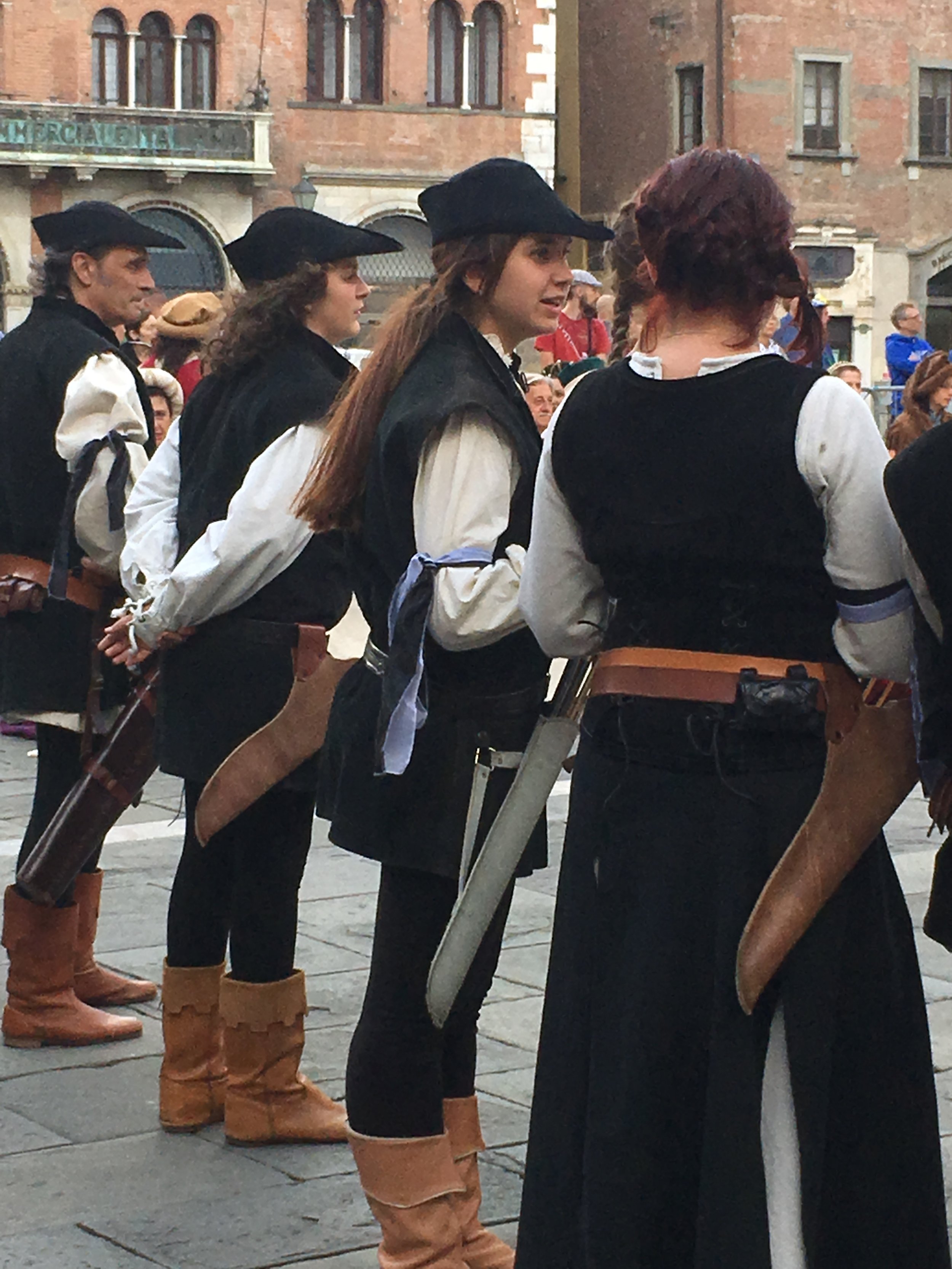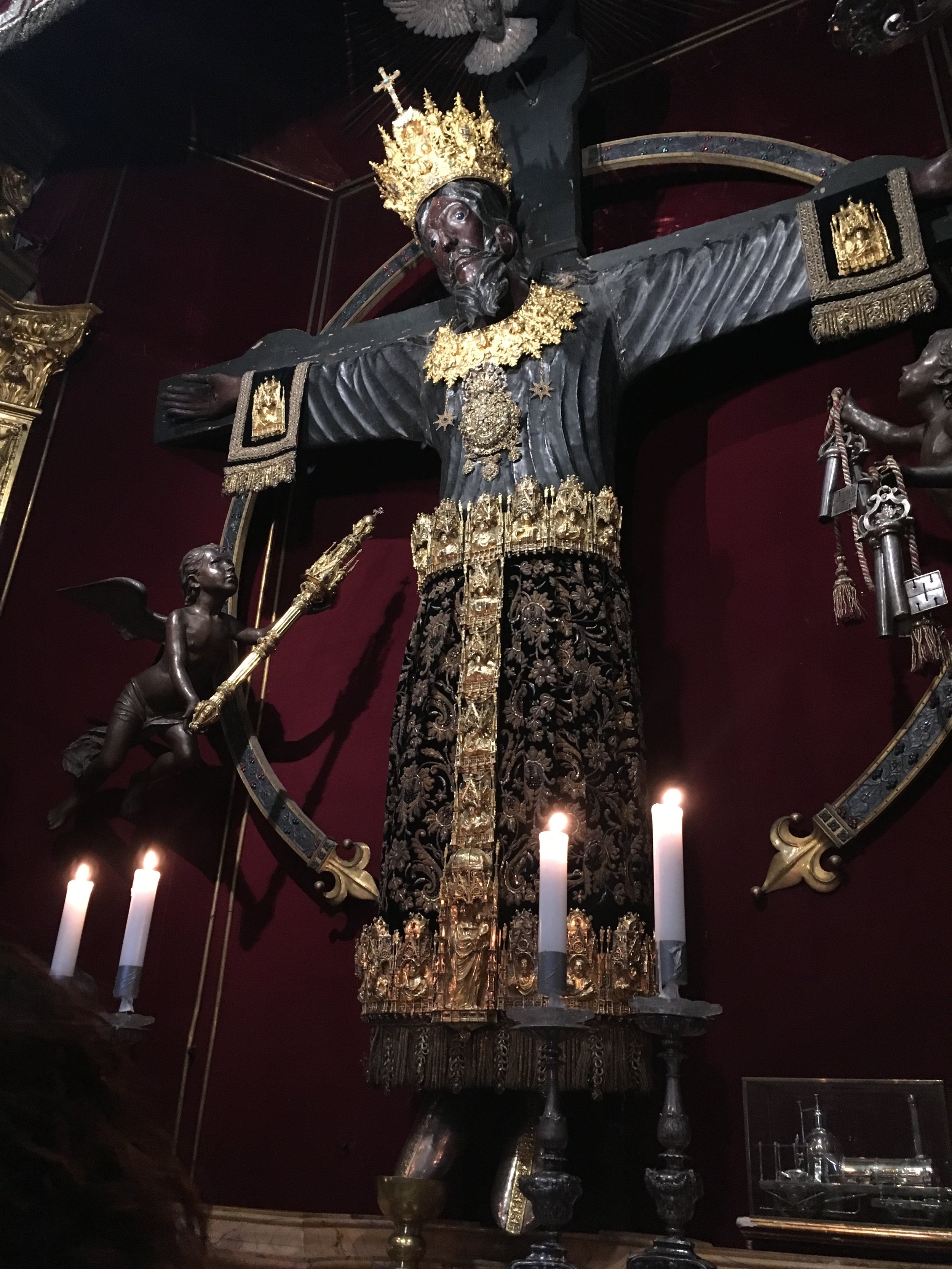Swing and Pop in a Stunning Church
Like most Italian communities, Lucca is home to a multitude of churches from which music often rings out. Sacred hymns, opera arias and classic sonatas are typically the repertoire, which is why a recent concert in the tiny Chiesa di Santa Caterina was such a delightful surprise. The a cappella Italian group, Coro Puntaccapo, enchanted a small audience for an hour with fun arrangements of swing and pop music from the '30s, '40s and '50s. Such greats as “Ain’t Misbehavin’," “Chattanooga Choo Choo” and “Tea for Two” were harmonized perfectly by a sextet for the first half of the concert and by a septet for the second half.
The stage is set for a swing concert in the Chiesa di Santa Catarina in Lucca.
Toes were tapping and fingers were snapping as the group started out the set with a couple of Italian ditties and then moved into American standards. A young soprano almost stole the show with her great voice and stage presence but the three men in the group also had shining moments with solos and sound effects.
The Italian swing group Coro Puntaccapo
And while the music lacked the solemnity of “church music,” there was no dissonance between the music and the setting. The joyful music blended perfectly with the bright and beautiful Chiesa di Santa Caterina. An 18-month project some three years ago resulted in restoration of the chapel. Statutes representing Charity and Purity, as well as paintings, adorn the interior. The domed ceiling is masterfully designed and although the church is small, there is something to catch the eye at every turn: a column here, the altar there. It was the perfect setting for an intimate musical performance.
Looking up at the chapel ceiling in the Chiesa di Santa Catarina, Lucca
The concert was free, as was entrance to the church. The event was a unique and bright way to spend the early part of a Sunday evening – just the right kind of surprise.
-post by JG

























